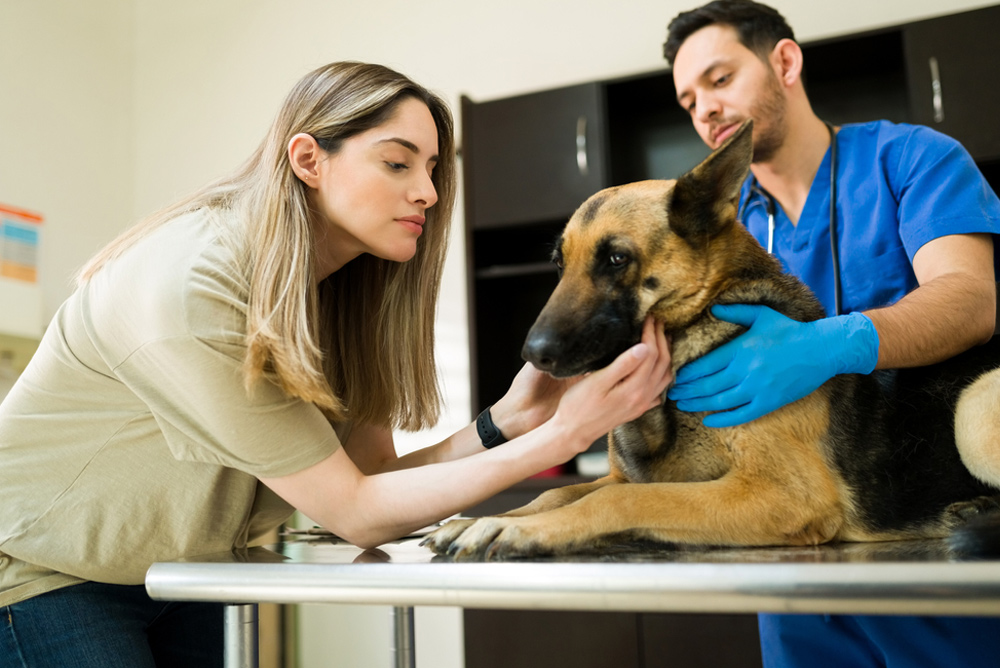Digital Imaging and Communications in Medicine (DICOM) is the international standard for medical images and related information, defining the formats for medical images so they have the data and quality necessary to be exchanged in a clinical setting. DICOM has become indispensable in the veterinary industry, and the system offers numerous advantages. Keep reading to learn about this complex system and how your practice can benefit.
DICOM history
In the 1980s, computed tomography (CT) and magnetic resonance imaging (MRI) made it clear that computing would play an increasingly important role in the medical industry. At the time, the manufacturers of these technologies were the only ones who could easily decode and print the images produced. DICOM history highlights include:
- 1983 — The American College of Radiology (ACR) and the National Electrical Manufacturers Association (NEMA) form a standards committee to address the problem facing radiologists, physicians, and equipment vendors.
- 1985 — ACR-NEMA 300 is released, specifying image transmission and covering point-to-point image communication.
- 1993 — The third version of the standard is released. This version uses local area networks by layering the medical image protocols on top of general networking protocols. The name is changed to DICOM.
- 1995 — The DICOM standards committee is reorganized to formally represent all medical specialties using imaging.
- 2000 — Internet security mechanisms are added through secure communication profiles for the DICOM protocol.
- Early 2000s — Digital radiography becomes mainstream for veterinarians.
- 2003 — Multi-frame enhanced image formats are adopted to support the next generation of advanced imaging technologies.
- 2006 — The DICOM standards committee releases a supplementary addendum to address the special needs in veterinary medicine and veterinary diagnostic imaging.
- 2016 — Small animal acquisition context is added.
DICOM applications
DICOM is the standard communications protocol for capturing, storing, and transferring medical images and related data. The term refers to the protocol, as well as the corresponding file format. Specific applications include:
-
- Data format — DICOM organizes information into data sets so that an image contains the patient identification in the file, preventing the image from being separated from this information by mistake.
- Image display — The DICOM committee developed a grayscale standard display function. This was necessary to ensure grayscale image displays were identical on different monitors and hard copy images were consistent when printed from various printers.
- Modality worklist — The DICOM modality worklist service describes imaging procedures that have been scheduled for operation by an image acquisition device. The items on the work list include details about the patient (e.g., name, sex, age), the procedure scheduled, equipment type, the reason for the exam, and the veterinarian ordering the exam. This information is used by the imaging device to populate details in the image metadata. Before this technology, the scanner operator had to enter the information manually.
- Storage — The DICOM store service allows users to send images to a picture archiving and communication system (PACS) or workstation. The DICOM storage commitment service allows users to confirm that an image has been permanently stored by a device. This may be on a redundant disk or on backup media.
- Retrieve — DICOM users can use a workstation to find image lists and retrieve them from a PAC.
- Print — The DICOM print service is used to send images to a DICOM printer and ensures consistency among various display devices, including hard copy printouts.
DICOM benefits for veterinarians

Medical imaging modalities are an essential tool to properly diagnose patients without using more invasive techniques, and DICOM has become ubiquitous wherever medical imaging is used. Benefits for veterinarians include:
- Better diagnosis and patient care — When veterinarians have the ability to send medical data and ask for advice from a consulting veterinary expert, they can provide more accurate diagnoses and better patient care.
- Improved workflow — DICOM eliminates the need to struggle with manual filing. Veterinarians can quickly retrieve and access images remotely, saving time and energy.
- Easier access — DICOM provides a more organized and convenient management system for patient information. All data can be accessed through a single workstation since images are integrated into the hospital’s database.
- Improved communication — DICOM allows images and structured reports to easily be sent to referring veterinarians, improving communication so everyone knows the patient’s condition.
- No need for physical storage — Images are securely stored digitally, eliminating the need for bulky physical storage files.
Finding a company that complies with DICOM is essential to provide optimal patient care and ensure you meet the standards set by the American College of Veterinary Radiologists (ACVR) for PACS. Contact StringSoft today so we can demonstrate how your practice can benefit.






Leave A Comment